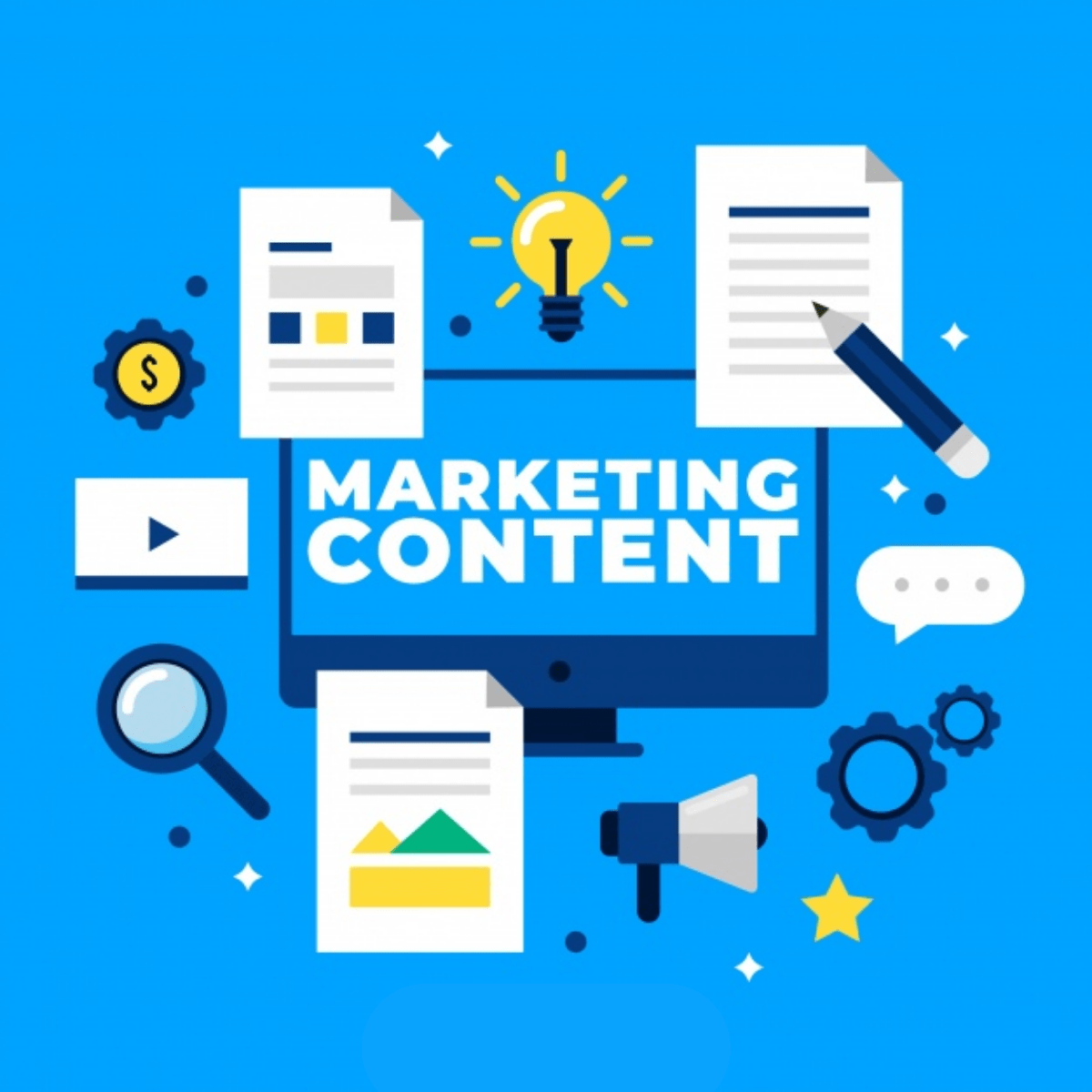Content Marketing is highly focused on using multiple web channels to develop, post, and deliver content to the target audience. It is also important to know how to build a content marketing strategy.
Content marketing is vital when it addresses the questions of the customers. You can create trust with your audience with content marketing, boost conversions, communicate with your clients, and generate leads. Additionally, clients demand high-quality, reliable content from their favourite brands in today’s era.


It never hurts to review your content strategy plan to ensure that it is up-to-date, imaginative, and entertaining with your clients regardless of when or how they expect to buy, whether you’re only starting out with content marketing or you’ve been using the same approach for a while.
Having a strong, smart content marketing strategy in motion is the first step towards getting a leg up on the competition and successfully reaching the audience. It is highly recommended to take a content writing course to build s strong foundation for content marketing. If you have difficulties preparing for the next year or need to add any fresh ideas to your schedule, read on.

In this article, we’ll look into what content strategy is, why a content marketing campaign is needed for your company, and what steps you need to take to build your strategy.
Top 11 Steps To Create a Content Marketing Strategy for Business Growth
1. Set Your Target and Expectations

Setting out a content marketing strategic plan is a strong starting point for your content strategy plan. This is a concise comment that makes it easy to reflect on what is vital in developing your content so that your content marketing strategy remains on target. A description of the content marketing mission outlines the target demographic, the content you will use to attract them, and the advantage they will receive.
Although the mission statement covers what your audience will expect from your plan for content marketing, you still need to understand what your organization will get from it. That’s where the target for the company comes in.
As a consequence of the content management strategy, the key targets of an enterprise include raising sales. Making more sales and having more high-quality leads would help you hit your targets for income. As the more traffic, there is more traffic on your blog, the better the possibilities for reaching your other targets.
Improving the company’s perception because you achieve power and authority and be perceived as a leader in thought. SEO efficiency, which contributes to further traffic. Reduced cost of marketing as the content becomes more effective. Engagement via social media, which will assist with both traffic and control.
2. Understand and Set your KPIs
In order to accomplish targets, the only way is to make them concrete and measurable. That means setting the content marketing strategy’s key performance indicators (KPIs). By offering benchmarks that you can tick off, the KPIs can let you realize when you have accomplished your objectives.
These would usually have particular numbers added to them. Within the month, quarter, or year, you might want to reach a certain sales target and get more signups for your lead magnet as a sign that you are receiving more high-quality leads.


Get a minimum number of potential email users as well and see an improvement in web visits and onsite content participation.
To further increase traffic, enhance the search ranking of some of your main sites. For your pillar content, get a certain number of mentions, likes, and comments. Be eligible to take part in some main activities in the industry.
You’ll also want to pay attention to marketing expenses, track the spending on multiple campaigns, and keep an eye on the cost of lead generation and sales.
3. Understand Your Audience

As described earlier, you would need to be specific about who your target audience is for a good content marketing strategy, so you can build the best content to attract them. Three steps you need to do are:
- Attain Demographic Data: The first step is to gather demographics for your users, email recipients, and followers on social media. Web analytics, social media analytics, and email subscriber analytics will provide you with the data you need on the age, ethnicity, education, salary, and main interests of your audience.
- Attain Customer Feedback: Try gathering feedback from your existing clients to discover even more about your target audience. This will give you visibility into how they feel about the content you are delivering at the moment, what their most pressing concerns are, and how your content could resolve their issues. Getting the correct feedback from consumers will make you assess the preferences of your readers and subscribers, focus on the best places to approach your customers, and map out your buyer personas.
- Develop Buyer Persona: You can build or map out buyer personas when you have demographic details and customer input. Often known as consumer avatars, buyer personas define your ideal readers and buyers so that you can properly target content. The best consumer avatars provide feedback on the pressure points, obstacles, knowledge sources, and behavioral motivators of the clients. When you understand all this, you would have a better idea of the kind of content your audience is going to relate to, how it is going to benefit them, and what is going to make them think about it.
4. Evaluating Your Present Status
Most organizations have content out there now. As well as social media posts, interviews, videos, and so on, these will include content that is on your blog. That’s why the next move is to find out how you are helped to reach your goals by the content.
You’ll need to do a content audit by logging all the content bits, such as blog entries, guest posts, and so on to do that. Evaluating their utility or performance and finding the holes. You will also want to look at how your content fits with that of your peers, to see how the market will fit with the new content.


5. Select Content Channels
You will start to get a sense of where your audience is hanging out and where you already have a strong online presence as you work through this process. Instead of trying to do it all at once, it’s best to rely on what’s successful and build from there.
But you’ll need to take another look at web analytics to be completely confident. Go to Acquisition » Social » Overview when you’re in Google Analytics to see the major social networks where the content is being viewed.
For better detail, you may also customize your search terms. With this data, you can conveniently determine which networks to aim for your content to get social media exposure and sharing.
6. Selecting the Content Types

Next, think about the content forms that you need to develop. There are certain content forms that can be used with any content marketing plan.
Many popular content marketing campaigns focus on the publishing on your own platform (or home base) of a central pillar of content that can then be repurposed and posted on other pages (outposts).
So blog posts are an integral part of the content marketing mix, and they still yield powerful outcomes. Ideally, the blog posts can be actionable, important, and shareable, and should contain a number of types of articles.
Decide on what other content types should be included? Video marketing can be an important aspect of every marketing, as our own analysis indicates, as it is known to attract tourists and keep them on-site longer, increase lead generation, and minimize abandonment. To deepen the interaction, you’ll also want to add other forms of visual content such as infographics. Lead magnets such as webinars, ebooks, checklists, worksheets, and more are other forms of content to be used for better lead generation.
7. Classification and Association of Resources
It’s vital to make sure you have what you need to execute on your content marketing strategy now that you know what kind of content you’re planning to build, who it’s about, and where you’re planning to publish it.
It is about allocating roles to this subject. As well as who is responsible for distributing specific content products, you may need to worry about who is in general charge. This will depend on the scale of the market and content staff and whether you do it in-house or farm out the creation of content.
Next, figure out what the method of creating content is going to be. Before you begin researching and producing pieces of material, there’s only one more thing to do: create a content calendar, so you know what will be released when.
8. Content Calendar

You’ll need to decide exactly when you intend to post the content on each of the channels you want to use as part of your content plan. A main content marketing error is a lack of preparation, so it is vital to use a content calendar to keep all the content prepared. There are many avenues for this to be done.
For any piece of material, you can use Google Calendar and simply place the due dates there. That works very well, especially if you don’t publish a lot of material.
Google calendar is the easiest way, but if you post a lot of content and have to handle a content team and the development workflow you’ve picked, then you’re obviously going to want even more features, and that can be given by Asana and Co-schedule.
9. Content Creation
As you’ve seen, before you actually create a piece of content, there’s a lot of prep work in your content marketing strategy. But now it is time for just that to be done. You’ll have an idea of what type of blog post to create with the study you’ve already done. Now it’s time to pick a title and begin working on it from the content calendar.
You need to figure out what’s out there already before you’re about to write and how your new content will bring value to your audience. This involves doing a Google search, reviewing the top content for your subject, and seeing if it can be improved. That’s called the technique of the skyscraper. Original research also does well, so if you are collecting the right type of data, consider this as an option. Include keyword analysis to define the key terms to be used for better SEO and better search rankings.
Finally, start writing the content or producing it. You’ll have to think at this stage about how to represent the personality of your company in the content you write. The balance between showcasing your experience and not patronizing the audience would have to be controlled. Establish continuity with the voice of your company and keep essential SEO rating parameters in mind to optimize your content.


10. Distribution and Marketing
Distribution and marketing are the next key part of your content strategy. That’s because, unless they are handled properly, you won’t get the results you want.
Set a schedule, both immediately and through a drip campaign via a tool like Missinglettr, to share your content on social media. To spread your content to subscribers, use email marketing. To spread the word even wider, notify any influencers mentioned in your content.
11. Measure Results

Lastly, it’s time to evaluate your content marketing strategy’s success. You will return to those KPIs you set at the beginning of the content strategy plan to do this and see what has changed and whether your goals are being hit.
To do this as described above, you can check Google Analytics to see how your content performs, measure social sharing activity via Buzzsumo and other social analytics tools, look at the conversion analytics dashboard of OptinMonster to evaluate the success of your marketing campaigns.
You’ll be able to tweak your content marketing strategy at regular intervals by tracking your progress, so it’s always up to date.
Conclusion
A successful content marketing strategy needs time, organization, and creativity to grow. Setting up your strategy for the new year won’t be a problem if you follow the content marketing tips, from building the basis of your content marketing plan to adding tools to better manage your content.

